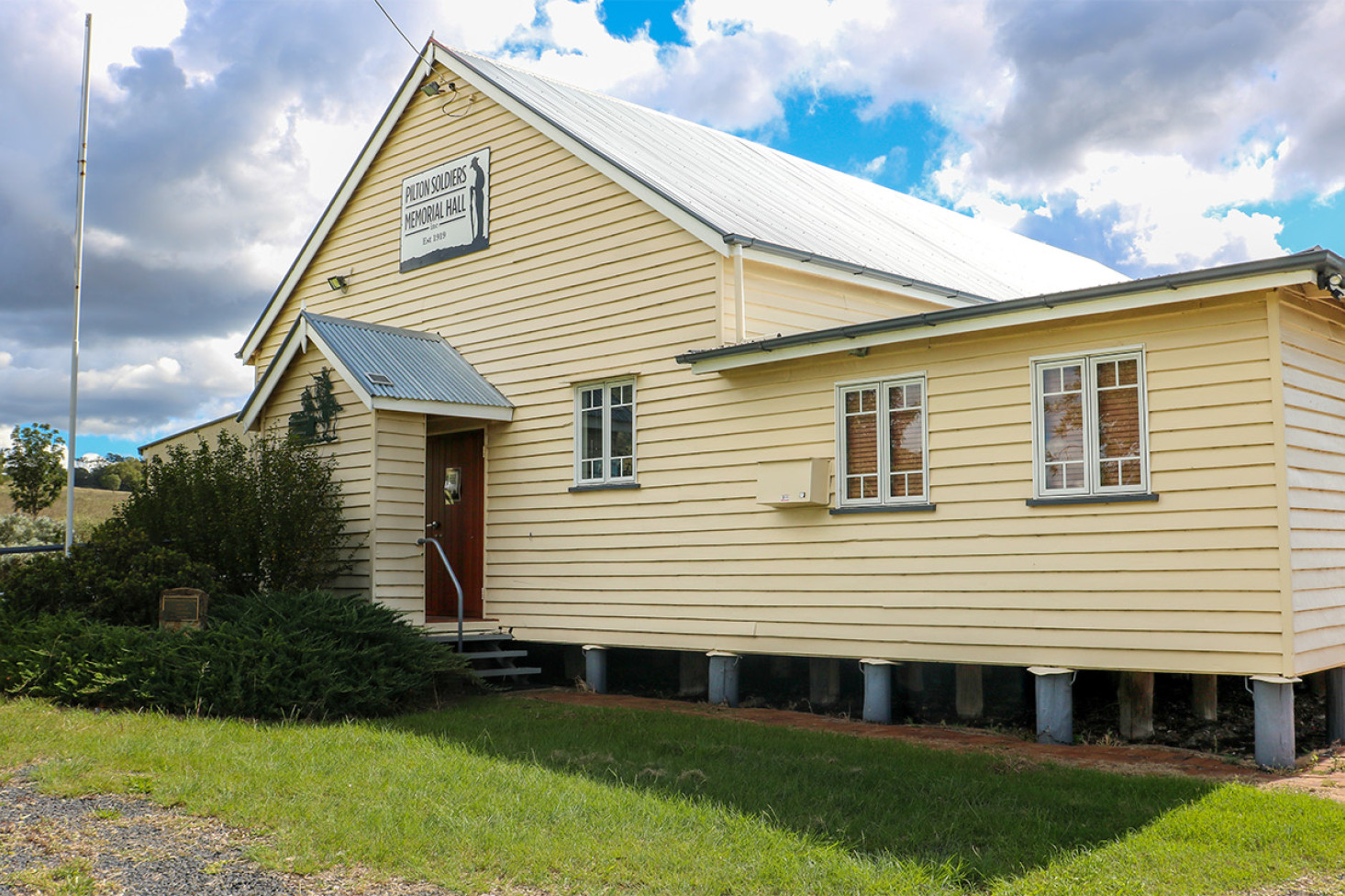Community & Business
25 April, 2025
Pilton Hall’s rich Anzac tradition
There are hundreds of soldiers memorial halls around Australia but the Pilton Solders’ Memorial Hall holds a special place in history as the very first Soldiers’ Memorial Hall to be built in Australia. This would surely be a reflection of the commitment of the Pilton Valley community to honour its servicemen and women of World War One.

This proud community commitment continues today as the Hall committee regularly holds an Anzac Day function and this year an Anzac Day Sunset Service will be held with a community barbecue beginning at 5pm.
Erected in 1919, the hall was officially opened by the Honourable Littleton Groom, the then Federal Minister for Works and Railways, on Australia Day 1920.
The hall’s World War One Honour Board displays the names of forty soldiers and one nurse from the Pilton district who enlisted in World War One, half of those tragically being either killed or wounded.
The commitment of the Pilton Valley community to its servicemen and women continued during the difficult years of World War Two when Pilton won two awards for outstanding fundraising, and pennants acknowledging this achievement are now proudly on display in the hall.
The World War Two Honour Roll contains the 35 names of men and women from the district who served during the years 1939 to 1945.
Once again Pilton Hall held “Farewell” evenings for the departing servicemen and women.
The pride the Pilton community holds for their servicemen and women has not diminished over the years and today the walls of the hall proudly display the pictures and service details of Pilton’s World War I and World War II veterans.
The Pilton Valley is one of the most picturesque areas on the Darling Downs and therefore it is no surprise to find that European settlement began there in the early 1840s.
Pilton’s pioneer history revolves around its origins as a pastoral run excised from Clifton pastoral station with lessees including Philip Pinnock, John Gammie, Joseph King, and Joshua
J. Whitting.
The rich soil of the valley proved to grow excellent pasture grasses for both cattle and horses and quickly attracted new settlers.
Many descendants of the early Pilton settlers still live in the valley or close by, such as Brett and Rebekah Turkington who are active members on the Pilton Hall committee with Brett as President and Rebekah as Treasurer.
Brett gives great credit to other members of the Committee such as Life Member Eddie Starr for the continuation of the Pilton Hall, not just as a Soldiers’ Memorial Hall, but for the ongoing role the hall plays in fostering community interaction.
Trivia Nights, Market Stalls, Tuesday Ladies Craft Day and as a Uniting Church venue every second Sunday are some of the ways this remarkable hall remains relevant today.
The Clifton Courier would like to thank Brett and Rebekah Turkington for their cooperation in writing this article and acknowledges the use of Clifton State High School’s wonderful publication “Re-discovering our WWI Anzacs” by Margaret Miller.


